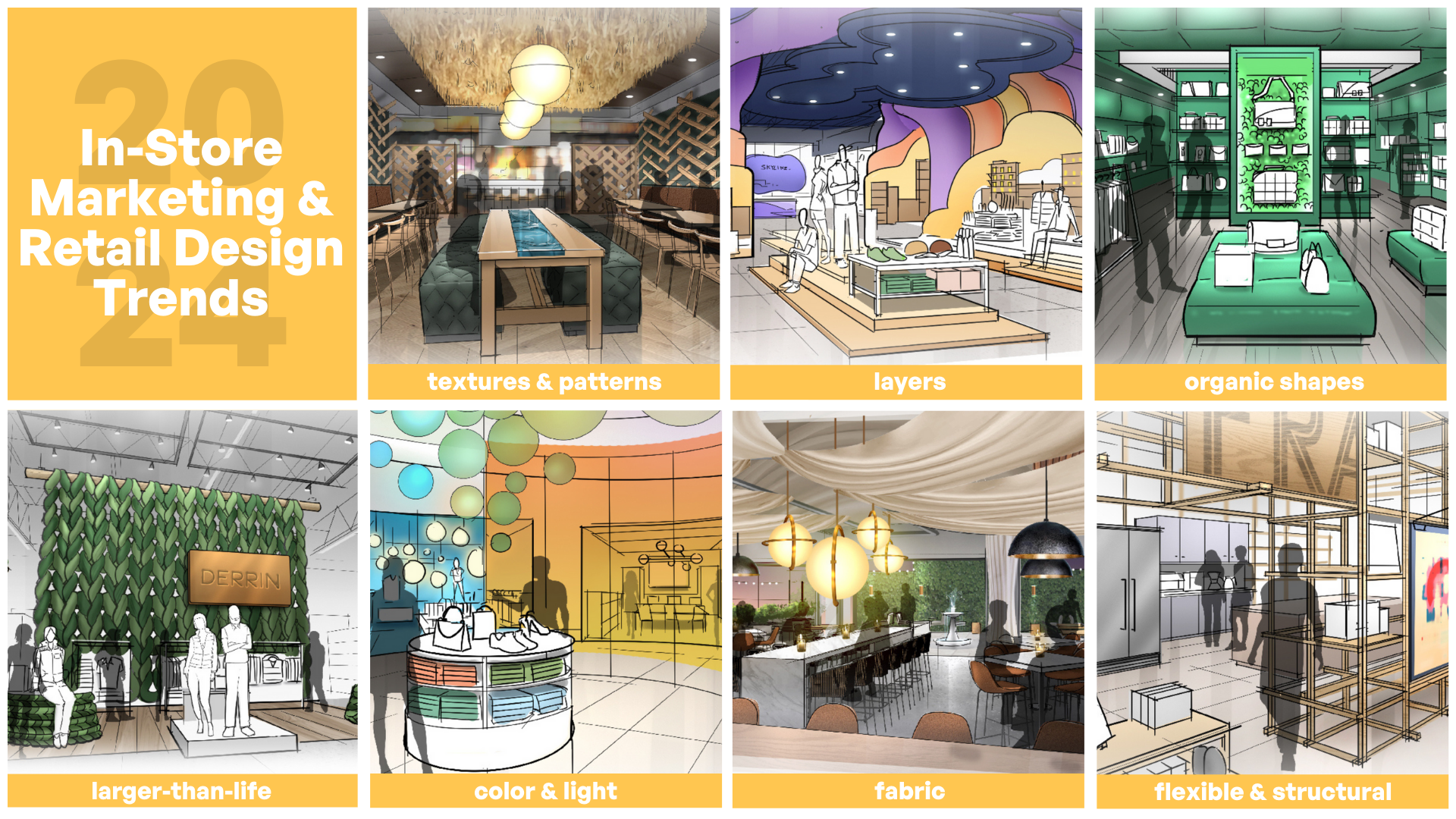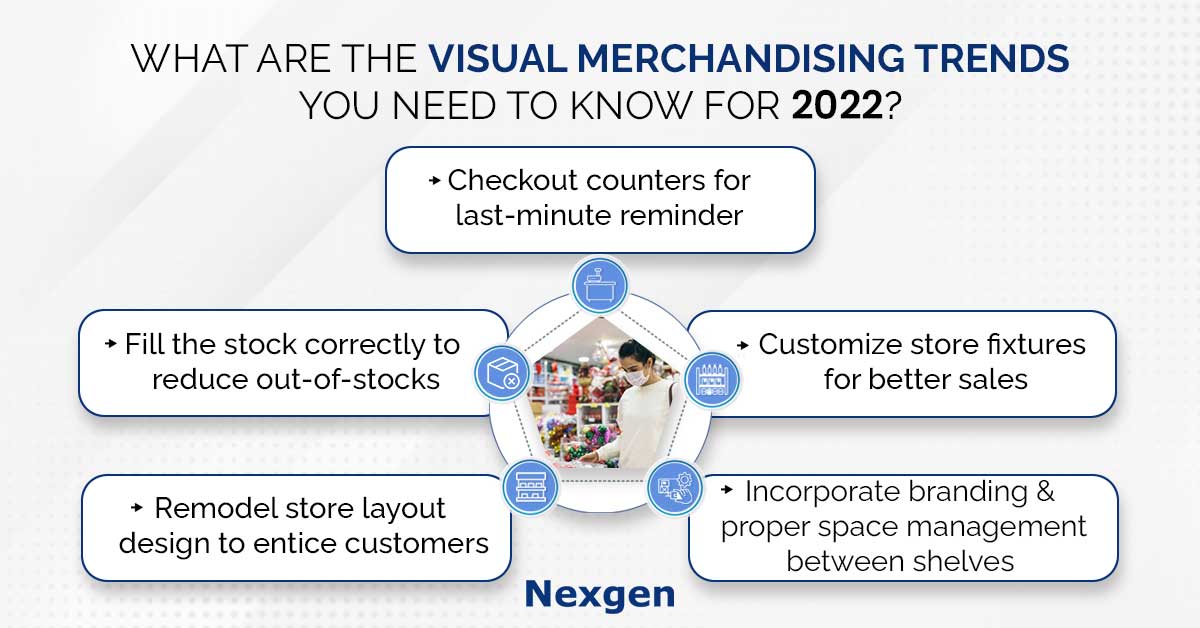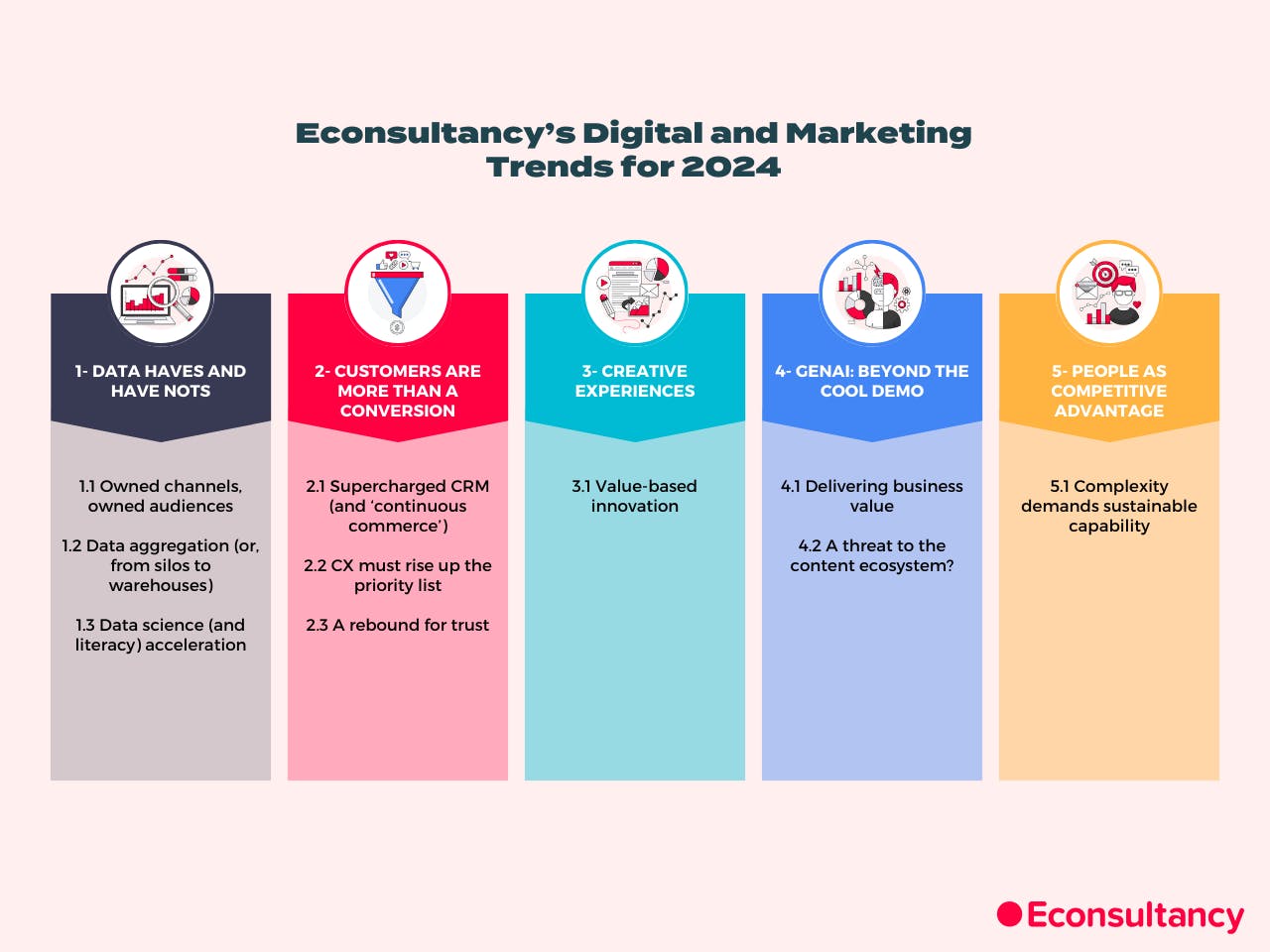As we enter 2024, the merchandise design landscape is changing quickly, shaped by evolving consumer tastes and new technologies. For designers, grasping the latest trends is crucial for boosting product profitability. Key trends include collage charm that plays on nostalgic visuals, the use of AI to generate unique elements, and minimalism that incorporates vibrant colors appealing to Gen Z. Moreover, integrating interactive features and focusing on sustainability are now essential for success. To effectively market these creations, leveraging online platforms and engaging customers through loyalty programs will be vital. Staying ahead with these strategies can significantly impact brand success in this competitive arena.
1. Understanding the 2024 Design Trends
 Credits: theimaginegroup.com
Credits: theimaginegroup.com
As we explore the design landscape of 2024, several key trends emerge that can help shape successful merchandise. One prominent trend is the ‘Collage Charm,’ which taps into a sense of nostalgia by blending various textures, shapes, and images in a handmade style. This approach allows for a more personal and creative touch in designs, appealing to consumers looking for something unique.
Another significant trend is the incorporation of AI in design processes. Artificial intelligence tools can enhance creativity and streamline workflows, enabling designers to craft surreal and hyper-realistic elements that grab attention. Embracing these technologies can set your merchandise apart in a crowded market.
Minimalism continues to thrive but with a twist—designers are adding bold pops of color to minimalist frameworks. This approach resonates particularly with younger audiences like Gen Z, who seek out vibrant and eye-catching products.
3D design elements are also gaining popularity, adding depth and realism to merchandise. These designs not only enhance visual appeal but also create an immersive experience for consumers, making them more likely to engage with the product.
Additionally, interactive and tactile designs are becoming crucial in capturing consumer interest. Products that offer sensory experiences, whether digital or physical, encourage deeper interaction and connection.
Sustainability remains a top priority for consumers in 2024. Eco-friendly designs and packaging are expected, and brands that prioritize these aspects can build stronger relationships with their audience.
2. Key Trends to Watch in Merchandise Design
 Credits: nexgenus.com
Credits: nexgenus.com
As we move into 2024, several key trends are shaping merchandise design. One significant trend is the rise of collage charm, which taps into nostalgia with unique combinations of textures and images, creating a visually striking aesthetic. Alongside this, artificial intelligence is transforming design processes, enabling designers to craft surreal and hyper-realistic elements that captivate consumers. Minimalism remains popular but is evolving with bold pops of color, particularly appealing to younger audiences like Gen Z.
Additionally, 3D design elements are gaining traction, adding depth to merchandise and making it more visually engaging. Interactive and tactile designs are becoming essential, as they offer consumers a sensory experience that enhances their connection to the product. Furthermore, sustainability continues to be a vital factor; consumers are increasingly demanding eco-friendly practices in merchandise design and packaging. By staying attuned to these trends, designers can create products that resonate with modern consumers.
3. Effective Marketing Strategies for 2024
 Credits: econsultancy.com
Credits: econsultancy.com
To complement great designs, consider the following marketing strategies: Utilize branded merchandise as powerful marketing tools that foster brand loyalty. Products like drinkware or tech accessories ensure ongoing brand exposure. A robust online presence is crucial in 2024; use social media, SEO-optimized websites, and targeted ads to reach your audience effectively. Engage with customers through newsletters and feedback surveys to build community. Integrate merchandise into interactive marketing campaigns like scavenger hunts or contests to enhance engagement and visibility. Implement loyalty schemes that reward repeat customers, as research shows loyalty program members can spend significantly more than non-members. Use geofencing to target customers within a specific radius of your store with personalized promotions, encouraging foot traffic.
4. Case Studies of Successful Merchandise Campaigns
Disney’s promotional boxes for the “Cruella” premiere showcased how tailored merchandise can create buzz and enhance brand engagement. These limited-edition boxes combined exclusive items with the film’s themes, attracting both fans and collectors. Another standout example is Sony’s “God of War Ragnarök Collector’s Edition,” which featured unique, high-quality merchandise that resonated with the game’s dedicated fanbase. This approach not only boosted sales but also strengthened community ties among fans. Similarly, Hulu’s collaboration with Levi’s for “The Handmaid’s Tale” introduced limited-edition patches that drove social media engagement and sparked conversations about the show’s impact. These campaigns illustrate the power of creative, targeted merchandise in engaging audiences and driving profitability.
5. Best Practices for Designing Profitable Merch
Identifying your audience is crucial for creating merchandise that resonates. Know their preferences, interests, and demographics. Conduct surveys or use social media insights to gather data that helps in crafting designs that appeal directly to them. Quality should always take precedence over quantity. Using high-quality materials not only ensures customer satisfaction but also encourages repeat purchases, as consumers are more likely to return for products that last. Incorporating your company’s values into your designs can create a stronger emotional connection with your audience. For instance, if your brand emphasizes sustainability, ensure your merchandise reflects that commitment, whether through eco-friendly materials or ethical production practices. Testing and iterating on your designs before going into full production can save time and resources. Launch prototypes, gather customer feedback, and make improvements accordingly. This not only enhances the product but also makes customers feel valued and heard. Finally, staying trend-savvy is essential. Regularly update your designs to reflect current trends and consumer preferences, ensuring that your merchandise remains relevant and appealing in a fast-paced market.
- Focus on unique design elements that stand out
- Use high-quality materials for a premium feel
- Conduct market research to understand customer preferences
- Incorporate seasonal elements to stay relevant
- Test designs with sample products before full production
- Ensure designs align with brand identity
- Establish pricing strategies that reflect value and quality
- Gather feedback for continuous improvement
6. Identifying Your Audience for Better Sales
Knowing your audience is essential for creating merchandise that resonates and sells well. Start by researching the demographics of your potential customers, such as age, gender, interests, and location. For instance, if you’re targeting Gen Z, consider their values, like sustainability and social justice, and incorporate these themes into your designs. Additionally, engage directly with your audience through social media polls or surveys to gather insights about their preferences and styles. Creating detailed customer personas can help visualize your target audience, ensuring your designs and marketing efforts are aligned with their tastes. For example, if you discover that your audience loves vintage aesthetics, you might consider incorporating retro elements into your merchandise. This targeted approach not only increases the likelihood of sales but also fosters a deeper emotional connection with your brand.
7. Focusing on Quality Over Quantity in Merchandise
In today’s market, focusing on quality over quantity is essential for creating successful merchandise. Consumers are becoming more discerning, seeking products that not only look good but also stand the test of time. By prioritizing high-quality materials and craftsmanship, brands can foster customer loyalty and encourage repeat purchases. For instance, companies like Patagonia have built their reputation on durable, eco-friendly products that resonate with their audience’s values. This commitment to quality generates positive brand associations, leading to stronger customer relationships. Additionally, investing in quality can reduce return rates and increase customer satisfaction, ultimately enhancing profitability. By offering fewer, but better products, brands can simplify inventory management and create a more compelling narrative around their merchandise.
8. Incorporating Company Values in Your Designs
Incorporating company values into your merchandise designs is crucial for building a strong brand identity and connecting with consumers on a deeper level. When your products reflect your brand’s mission and ethical stance, it resonates with customers who share similar values. For instance, if your company prioritizes sustainability, your designs should highlight eco-friendly materials and practices. This not only attracts environmentally conscious consumers but also builds trust and loyalty.
Another way to incorporate values is through storytelling. Share the story behind your designs—whether it’s about empowering local artisans, promoting mental health awareness, or supporting social justice initiatives. This narrative can be woven into the design itself or included in the product’s description, making your merchandise not just a product but a part of a larger movement.
Consider the popular brand Patagonia, known for its commitment to environmental activism. Their merchandise often includes visuals and messages that promote conservation, encouraging customers to participate in their mission. This alignment of product and purpose not only drives sales but also fosters a community of like-minded individuals who feel good about their purchases.
Ultimately, when your merchandise embodies your company values, it creates an emotional connection with your audience, leading to greater brand loyalty and long-term profitability.
9. Testing and Iterating for Improved Products
Testing and iterating are crucial steps in the merchandise design process. Before launching a product, it’s wise to create prototypes and gather feedback. This allows designers to understand how the product resonates with the target audience. For instance, a clothing brand might release a limited run of a new t-shirt design to gauge customer reactions. By analyzing sales and collecting direct feedback, they can identify what works and what doesn’t, leading to adjustments in fit, color, or graphics. Iteration doesn’t stop after the initial launch either. Continually monitoring customer feedback and sales data can guide future improvements. Companies like Apple excel in this area, often releasing updated versions of their products based on user experiences. Embracing a mindset of continuous improvement can lead to enhanced customer satisfaction and increased profitability.
10. Staying Trend-Savvy for Merchandise Success
To ensure your merchandise remains profitable, it’s crucial to stay updated on the latest trends and consumer preferences. Regularly research design inspirations from various sources, including social media platforms like Instagram and Pinterest, where visual trends often emerge. Following influencers and trendsetters in your niche can provide insights into what resonates with your target audience.
Participating in industry events, trade shows, or online forums can also help you understand emerging trends and network with other designers. Engaging with your audience through polls or feedback on social media can provide direct insights into their preferences, allowing you to adapt your designs accordingly.
For instance, if you notice an uptick in demand for retro designs or eco-friendly materials, pivoting your merchandise line to include these elements could capture consumer interest. Additionally, keeping an eye on seasonal trends and cultural events can help you create timely and relevant products that stand out in a crowded market.
Ultimately, being trend-savvy means being proactive rather than reactive. Anticipating trends and integrating them into your designs can set your merchandise apart, driving sales and cementing your brand’s relevance in the marketplace.
Frequently Asked Questions
1. What makes a merch design profitable?
A profitable merch design often combines unique and appealing graphics with a strong understanding of your target audience’s preferences, trends, and what resonates with them.
2. How do I find the right audience for my merch?
Start by researching groups or communities that might appreciate your designs. Use social media, forums, and market research to understand their interests.
3. What role do trends play in designing merch?
Trends are crucial since they influence what people want to buy. Keep an eye on popular shows, movements, and styles to create relevant designs.
4. Can I use popular characters or images in my merch designs?
Using characters or images that are trademarked without permission can lead to legal issues. It’s best to create original designs or ensure you have the rights to use existing ones.
5. How can I evaluate the success of my merch designs?
Track sales data, customer feedback, and social media engagement. This information will help you understand what designs are working and what needs improvement.
TL;DR In 2024, successful merchandise design hinges on understanding key trends like collage charm and AI design, along with effective marketing strategies like interactive campaigns and loyalty programs. Prioritizing quality, aligning products with company values, and testing designs can drive profitability. Notable case studies, including Disney’s promotional boxes and Sony’s collector’s edition, emphasize tailored approaches for customer engagement. Staying trend-savvy and responsive to audience preferences is essential for building brand loyalty and achieving success in the merchandise landscape.

